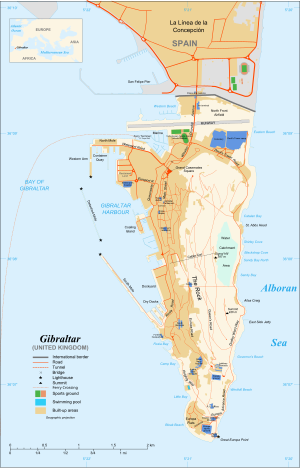*Oil theft more dangerous than price slide —Producers
By Clara Nwachukwu
LAGOS — As oil prices continue on the downward slide, Nigerian oil
firms may be producing at up to $5/barrel loss, as average production
costs for independent and marginal field producers is between $30 and
$35/barrel.
Oil prices, yesterday, resumed their free fall, with Brent crude,
similar to Nigeria’s sweet crude grade, falling 2.6 per cent to $31.34 a
barrel following a 10 per cent rise on Friday, while U.S. oil shed 95
cents to $31.24.
To compound the producers’ woes, a significant proportion of what is
produced is lost to oil thieves and pipeline vandals, which they insist
are even more dangerous than the bearish run oil prices
Industry chiefs, who spoke exclusively with Vanguard on phone, argued
that the turbulence in the international oil market deserves urgent
attention.
Specifically, they insisted that the Federal Government needs to be
talking with Nigerian producers very fast, if it must save indigenous
companies from running aground and plunging the economy into deeper
crisis than it is in already.
Impact on producers
Speaking on the impact of the oil crash on the producers, Chairman,
Petroleum Technology Association of Nigeria, PETAN, Mr. Emeka Ene, said:
“Current price is below Nigeria’s average of between $30 and $35 per
barrel. Most marginal field producers are producing above $30/barrel,
and with pipeline vandalism activities, costs will shoot up by another
$10/barrel, so oil production now is not sustainable.”
Ene, who spoke against the backdrop of oil crashing to 13-year lows
of below $28/barrel last week, noted that the bearish run may soon
fizzle out, whether shale or conventional oil is being produced at above
$25/barrel. As such, the southward run is not favourable to any
producer.
He also revealed that “a lot of Nigerian companies are out of work
because they cannot compete with the multinationals, so government needs
to have a serious talk with stakeholders in the industry.”
Oil theft, pipeline vandalism
Whether oil prices go bullish soon or not, other stakeholders feel that
the benefits of the rise will be lost on Nigeria, if the government does
not deal decisively with the twin incidence of pipeline vandalism and
oil theft.
The President, Nigerian Association of Petroleum Explorationists,
NAPE, Mr. Nosa Omorodion, maintained that “government needs to address
the issue of oil theft and pipeline vandalism very fast because, even if
price stabilises tomorrow or whenever, we will still not be able to
reap the full benefits of that rise.”
He further argued that “oil theft and vandalism remain recurring and
very worrisome because these issues are much bigger than oil slide,
which is mostly driven by speculation, while these activities affect
planning and are more cankerous than price slide. Operators are risking
their assets including human resources to produce the oil, only to have
it stolen thereafter.”
Against this backdrop, Omorodion, whose association is responsible
for finding and producing oil, revealed that NAPE is planning a national
seminar this month end to holistically address the issue of oil slide.
He said: “We are going to assess the length and breadth of the oil
and gas industry because the price slide is not only affecting
petroleum, but also other sectors of the economy.”
Apart from the impact on cost of production, the NAPE boss noted that
“The current price is affecting so many things, as nobody is drilling
for exploration now, and no one is thinking about fancy technology to
boost production. Also, exploration will suffer as no company is
exploring for new wells to grow reserves, and many small scale
producers, which are mostly Nigerians, will shut down.”
Going forward
Currently, most producers, both OPEC and non-OPEC including the U.S.,
Saudi Arabia, Russia, Iraq and a host of others are producing at
optimal capacities, which indicates that the downward glide may not let
up soon. Also, some analysts have predicted that price may glide to
below $20 or even $10/per barrel before rebounding.
Furthermore, with Iran’s oil also up in the market and expected to be
ramped up systematically, compounded by the melt down in demand being
fueled by the crisis in China, crude prices are facing more pressures.
But producers recognise that the global economy is in need of some
succour but differ on the best ways to go about it.
Noting that Nigerian service companies, who are the hardest hit by
the crashing oil prices and provide about 650 value services across the
industry, Ene insisted that Nigeria has the weapon in these companies to
cushion the market turbulence but has not fully appreciated it.
According to him, “Nigeria has a thriving local oil industry, and if
properly supported, can push down cost of production to $10 per barrel.
About 10 to 15 years ago, industry cost was below $10 per barrel and
nothing much had changed.
On his part, Omorodion believes that now is the time for oil
companies to be at the most cost efficient by prioritising between wants
and needs, while government becomes more fiscally disciplined and
diversifying the economy.
But Ene argued that the solution is not in prescriptivism, like the
majors calling for as much as 40 percent cuts in cost of services
thereby killing off the companies, adding that government needs to
identify and reduce unrealistic economic toll gates.
In his opinion, “The whole system is heated up, and cost of borrowing
is very high. So far, conversation has been restricted to major
operators and has not included the service companies driving operations
in the industry.
“If we must produce oil at $10/barrel, government needs to be talking
to Nigerian companies, who have invested in people and technology and
are not repatriating their profits.”
Furthermore, he noted that a lot of the systemic costs being borne by
indigenous firms contribute to the high cost of production, such as
what he described as “Federal Government agents charging unrealistic
charges like asking for $10million for permits need to be looked into.”




